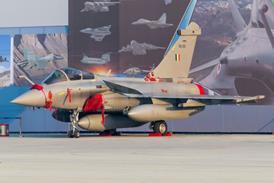The US Air Force could benefit from the use of electric vertical take-off and landing (eVTOL) aircraft in niche applications, according to think tank Rand Corporation.
In a report, Rand notes that while the USAF has done some preliminary work with eVTOLs through the Agility Prime and AFWERX initiatives, the USAF has relatively little influence over the nascent eVTOL market, which is aimed at commercial applications. The lack of influence stems from the USAF’s lack of significant investment in eVTOL development programmes.

Rand explored three possible ways the USAF could benefit from eVTOLs, all niche transport applications.
At the remote Nevada Test and Training Range (NTTR), the USAF has a difficult time retaining contractors owing to long commutes.
An eVTOL service connecting the NTTR to Las Vegas would greatly cut down commute times, and therefore improve contractors’ quality of life – thus aiding retention.
Another application is the transport of personnel around western missile fields where the USAF has 400 LGM-30G Minuteman intercontinental ballistic missiles based in 450 silos.
The silos require extensive support and security, and to this end the USAF operates 63 Bell UH-1N helicopters, which are being replaced by the Boeing MH-139A Grey Wolf.
These helicopters – which can be armed - cannot be replaced by eVTOLs. Instead, Rand sees eVTOLs replacing land transport at missile ranges. eVTOLs could improve efficiency by getting personnel between silos faster, thus reducing overall manpower needs, as well as reducing the cost and emissions associated with driving.
The third application Rand explored is with Agile Combat Employment (ACE). A key part of USAF doctrine, ACE calls for forces to be dispersed among several locations, thus complicating the targeting calculus of rivals such as China and Russia.
In the ACE scenario, eVTOLs would complement existing transport aircraft such as the Boeing C-17 and Lockheed Martin C-130J. One benefit of eVTOLs is that they are not reliant on fuel supplies, which are likely to be targeted in a conflict.
eVTOLs could be used for moving high value items and personnel, such as an essential component for a fighter aircraft or a flight surgeon.
“In the coming years, we expect increased adoption of electric ground vehicles by both [Department of Defense] and civilian society at large in many countries around the world,” adds Rand.
“This implies that charging infrastructure for electric ground vehicles, and the underlying transmission grid to support them, will be more developed in coming years than it is now and that eVTOL aircraft should be able to take advantage of that charging infrastructure.”





























